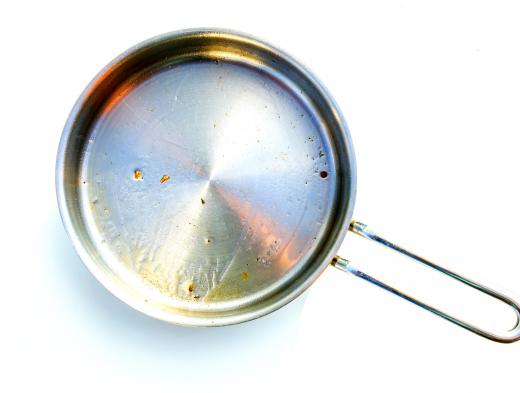What is Thermal Conduction?
Thermal conduction refers to the transfer of thermal energy because of an object having differing temperatures. For thermal energy to be transferred using conduction, there should be no movement of the object as a whole. Thermal energy always moves from that of higher concentration to lower concentration--that is, from hot to cold. Therefore, if one part of an object is hot, the heat will transfer via thermal conduction to the cooler part of that object. Thermal conduction will also take place if two different objects of varying temperatures are touching each other.
The particles—such as atoms and molecules—of an object with high thermal energy will move faster than that of an object with low thermal energy. When the particles are heated, they can either move around and bump into one another, thus transferring energy. In the case of many solids, the particles vibrate faster, causing the surrounding particles to vibrate. When thermal energy is transferred, the faster moving particles will slow down, thus becoming cooler, and the slower moving particles will move faster, thus becoming warmer. This will continue until the object reaches thermal equilibrium.

An example of thermal conduction is a metal pot on the stove. The heat source's particles will move and transfer thermal energy to the metal's particles, causing them to move faster. As the particles in the pot move faster, the pot becomes warmer. In addition, the particles in the pot will transfer their heat to the food or liquid within the pot. This allows the food to cook or the liquid to boil.
The rate that an object transfers heat through conduction is called thermal conductivity. An object with low conductivity will transfer heat slower than an object with high conductivity. This is why some substances are used as insulators while others are used in applications such as cooking. In general, solids are better conductors of heat than are liquids and gasses. In addition, metals are usually better thermal conductors than non-metal substances.
Thermal conduction caused by moving electrons is more efficient than conduction caused by vibration. The reason that metals are such good conductors of both heat and electricity is because they have a lot of electrons that are able to move around. The electrons, however, do not generally go very far when conducting thermal energy but rather collide into and transfer thermal energy to other electrons nearby which can then collide into and transfer thermal energy into other electrons near to them. The result is an efficient energy transfer method that gives such substances high thermal conductivity.
AS FEATURED ON:
AS FEATURED ON:











Discussion Comments
"Thermal conduction caused by moving electrons is more efficient than conduction caused by vibration. " - not always true. The material with largest conductivity at room temperature is diamond, which is an electric insulator. No electrons are involved in the transfer of heat through a diamond piece.
We are talking about two different effects, transfer of electrons between close atoms (this happens in the case of metals because the valence electrons are "free", not because a metal has many electrons), and transfer of phonons (ie, "vibration") between adjacent atoms and molecules.
What are the materials that can be used for thermal conductivity for a gas oven?
@indigomoth - That's one of the reasons insulation works so well if it incorporates air pockets.
If you touch something you make it really easy for the heat to transfer. Admittedly, you're touching air right now, but air moves around and has very few atoms in it, at least compared to solids, so it's not a good way to transfer heat (when it does, it's called convective heat transfer).
If you have a solid block of insulation, it might transfer heat slowly, but it will transfer it eventually through thermal conduction.
If you have lots of air pockets though, they transfer heat very slowly. The larger the pocket, the more slowly they will heat up.
That's why house insulation is often made of fluffy looking material, or even has a built in air space.
It stops the insulation from transferring heat, either from the outside in, or the inside out.
Whenever I touch something cold it always makes me wonder a little bit to remember that the reason it feels cold is because it's conducting away my thermal energy.
The molecules in my fingertips are exciting the molecules in the surface I'm touching and making them move around faster.
Thinking about it that way makes it easier to understand why some surfaces feel colder than others as well, or why they take longer to heat up.
Post your comments